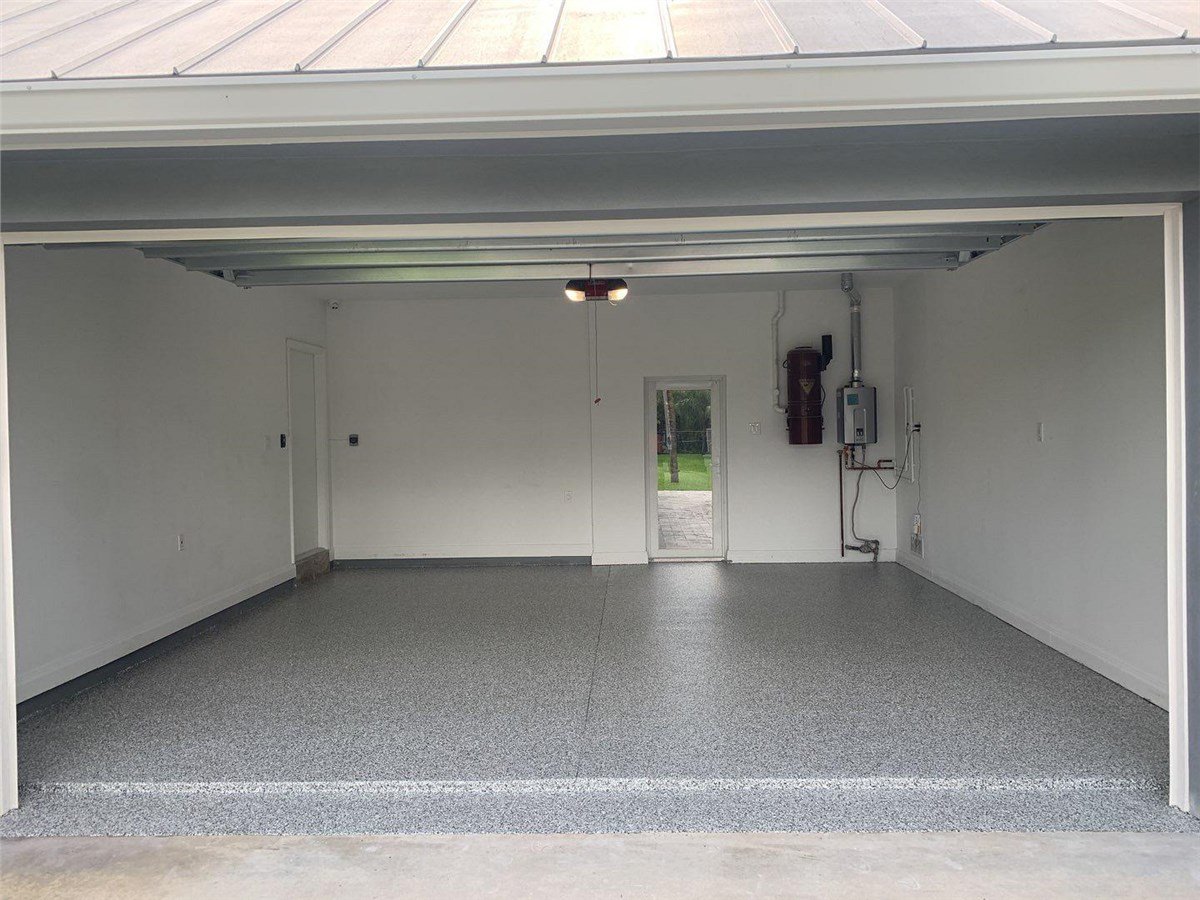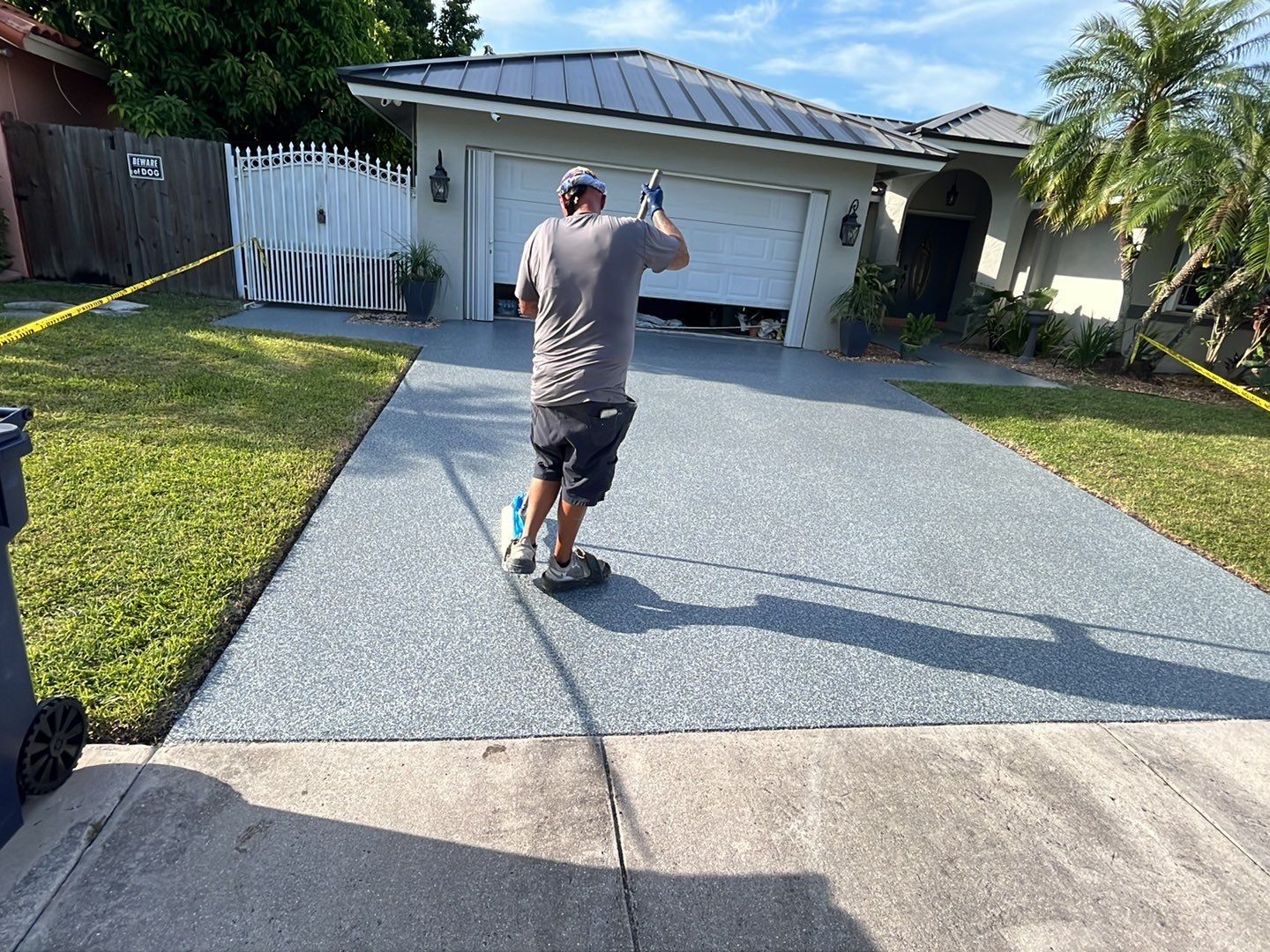When it comes to upgrading your home or business in South Florida, flooring plays a huge role in both functionality and design. From Boca Raton to Fort Lauderdale to Port St. Lucie, homeowners are looking for solutions that stand up to Florida’s unique climate—heat, humidity, and high traffic—while also enhancing the beauty of their space.
At 24 Hour Floor, we specialize in durable concrete coatings that transform ordinary floors into stunning, long-lasting surfaces. But how do concrete coatings compare to other flooring options like hardwood, tile, carpet, and laminate? This guide will walk you through the pros and cons of each flooring type, room-by-room recommendations, and why more Florida homeowners are turning to concrete coatings for a modern, low-maintenance solution.
Flooring Options to Consider
Hardwood
- Pros: Timeless beauty, increases home value, can be refinished multiple times.
- Cons: Expensive, vulnerable to moisture and scratching—making it less ideal for Florida’s humid climate.
Laminate
- Pros: Affordable, scratch-resistant, and available in styles that mimic hardwood or stone.
- Cons: Not moisture-proof, cannot be refinished, and can feel less durable underfoot.
Tile
- Pros: Excellent for high-moisture areas like kitchens and bathrooms, durable, and easy to clean.
- Cons: Cold and hard underfoot, grout maintenance required, and slippery when wet.
Carpet
- Pros: Soft, cozy, and great for bedrooms or living rooms; offers noise insulation.
- Cons: Stains easily, traps allergens, and wears quickly in high-traffic areas.
Concrete Coatings (Epoxy & Polyurea)
- Pros: Extremely durable, stain and chemical resistant, customizable with colors and finishes, slip-resistant, and perfect for garages, kitchens, patios, and commercial spaces.
- Cons: Higher upfront cost than laminate or carpet, but lasts decades with minimal maintenance.
Best Flooring by Room
Living Room
- Hardwood: Warm and classic but requires care.
- Laminate: Budget-friendly with a stylish look.
- Carpet: Cozy for families, but less durable in humid climates.
- Concrete Coatings: Sleek and modern, easy to clean, and available in finishes that mimic stone or tile.
Kitchen
- Tile: A traditional choice for moisture resistance.
- Vinyl: Affordable and water-resistant.
- Concrete Coatings: The best long-term solution—stain-proof, easy to sanitize, and customizable to match your cabinetry and backsplash.
Bathroom
- Tile: Water-resistant but grout requires sealing.
- Waterproof Vinyl: Good for budget-conscious remodels.
- Concrete Coatings: Moisture-proof, slip-resistant, and available in decorative finishes perfect for modern bathrooms.
Bedroom
- Carpet: Provides warmth and sound absorption.
- Hardwood: Adds elegance but needs extra care in Florida’s humidity.
- Concrete Coatings: Unexpectedly stylish with polished or matte finishes that create a clean, contemporary look.
Garage
- Epoxy Coatings: Classic choice for garages, resistant to stains and heavy use.
- Polyurea Coatings: Even stronger, UV-stable, and cures in just one day—our specialty at 24 Hour Floor.
- Concrete Sealers/Stains: Cost-effective but require frequent reapplication.

Flooring Style and Design
Flooring doesn’t just need to be practical—it should reflect your style.
- Rustic: Reclaimed wood or textured concrete coatings with earthy tones.
- Modern: Polished concrete or large-format tiles in gray, white, or black.
- Traditional: Classic hardwood or subtle concrete coatings that mimic stone or marble.
With 24 Hour Floor’s concrete coatings, you can achieve any look—sleek modern finishes, warm natural tones, or bold custom designs—without sacrificing durability.
Practical Considerations: Durability & Maintenance
- Hardwood: Lasts 50+ years but requires refinishing and protection from moisture.
- Laminate: 10–25 years; easy to maintain but not waterproof.
- Tile: Can last decades but grout upkeep is necessary.
- Carpet: 5–15 years with regular vacuuming and professional cleaning.
- Concrete Coatings: 20+ years, virtually maintenance-free—just sweep and mop.
For South Florida homes, where humidity and heavy use are daily challenges, polyurea concrete coatings stand out as the most durable and low-maintenance option.
Budget-Friendly Flooring Options
Not all floors are created equal in cost:
- Vinyl: Budget-friendly, water-resistant, and versatile.
- Laminate: Affordable alternative to hardwood.
- Engineered Wood: Offers real wood aesthetics at a lower cost.
- Concrete Coatings: Higher upfront investment but saves money long-term with durability and minimal upkeep.
- Carpet: Variable in cost; affordable options available, but lifespan is limited.
Concrete coatings are especially cost-effective when you factor in their longevity and low maintenance, making them a smart investment for South Florida homeowners.
Why Choose 24 Hour Floor?
When it comes to flooring in South Florida, 24 Hour Floor is your trusted local expert in polyurea and epoxy concrete coatings.
- Expert Installation: Our team has decades of experience ensuring flawless application.
- One-Day Floors: With our polyurea system, your new floor is ready in just 24 hours.
- Customization: Choose from a large range of colors to fit your home’s style.
- Durability: Our coatings are resistant to stains, chemicals, UV rays, and heavy traffic.
- Local Expertise: Serving Broward, Palm Beach, St. Lucie, Martin, and Miami-Dade Counties, we understand Florida’s climate and design trends.
Final Thoughts
Your flooring is the foundation of your home’s style and functionality. Whether you love the warmth of hardwood, the practicality of tile, or the coziness of carpet, it’s important to choose a solution that will last in South Florida’s unique environment.
For homeowners who want beauty, strength, and low maintenance, concrete coatings from 24 Hour Floor offer the perfect balance. From garages and patios to kitchens and living rooms, our polyurea and epoxy coatings deliver unmatched durability and style.
Ready to upgrade your floors?
Contact 24 Hour Floor today for a free quote and discover how our concrete coatings can transform your South Florida home or business in just one day!



